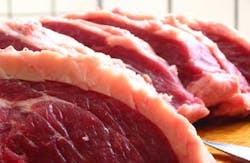Although safety is a top priority for all food manufacturers, meat and poultry processors face stricter control and tougher regulation. However, these are not the only challenges they have to deal with.
Regardless of the type of meat, the raw materials processed are expensive and many manufacturers work at extremely thin margins. The industry is constantly in the focus of attention because of animal welfare concerns. Meat packers, poultry plant operators and seafood processors need to meet demanding criteria in terms of quality, while at the same time striving to reduce their carbon footprint to comply with sustainability regulations.
Despite these factors, food processing is still a highly competitive business and companies are investing a lot in innovation, upgrades and improvements. In fact, the sector provides many opportunities, if plants are ready to embrace the new technologies and improve performance, FoodProcessing.com noted.
RELATED: Tests show horse DNA in spaghetti bolognese meatballs
At present, slaughter facilities are typically located off the farm and further processing often takes place in separate buildings or with some sort of separation of the various stages. Modern equipment has more hygienic design and new sanitation solutions are available. In addition, farm and animal health practices continue to be developed, in terms of improving processing and the finished products themselves. All these innovations aim to ensure high quality of the production and to keep the risk of foodborne illnesses at a minimum.
Over the years, several of the biggest foodborne illness outbreaks have been traced back to beef, pork and poultry. In 2012, contaminated salmon sickened hundreds of consumers in the United States and the Netherlands. While other food categories have also been linked to outbreaks, meat seems to be the most difficult for controlling and eliminating pathogens like E. coli, salmonella and Listeria monocytogenes.
Charles Giambrone, technology and regulatory manager for the safety division of chemical manufacturer Rochester Midland Co., explained that the control of pathogens in food products cannot be treated with a universal approach. There are three different options to deal with pathogens — A, B and C, Giambrone said. Option A is the ingredient approach and it involves a substance like nisin to control pathogens. It is often used in combination with other approaches. Option B is related to improved surface and equipment sanitation, while option C is about interventions with chemicals used to clean the product.
The majority of meat and poultry plants use these methods in combination and also arrange some kind of segregation of work functions to reduce the risk of spreading pathogens and contaminating products. Intervention has been very popular since the 1990s, Giambrone explained. Various acids and acidified chloride, chlorine oxide and acetyl bromide are used. Paracetic acid is very commonly used at poultry facilities. Lastly, the plants have also changed to a large extent and features like plant design and floor plans have become key elements of food safety.
